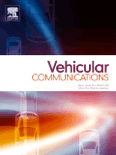
Vehicular Communications
Scope & Guideline
Pioneering Research for Connected and Autonomous Vehicles
Introduction
Aims and Scopes
- Vehicular Networking and Communication Protocols:
Research on protocols designed for communication between vehicles (V2V), between vehicles and infrastructure (V2I), and between vehicles and the cloud (V2C). This includes the development of new communication standards, enhancements in existing protocols, and performance evaluations. - Security and Privacy in Vehicular Communications:
The journal emphasizes the importance of cybersecurity measures and privacy-preserving techniques in vehicular networks. This includes authentication schemes, intrusion detection systems, and the use of blockchain technologies to secure communication. - Edge and Cloud Computing for Intelligent Transportation Systems:
Exploration of edge and cloud computing solutions that enhance vehicular networks through improved data processing, storage, and resource management, facilitating real-time decision-making in applications like traffic management and autonomous driving. - Machine Learning and AI Applications:
Application of AI and machine learning techniques to optimize vehicular communication, enhance decision-making processes, and improve traffic efficiency and safety. - UAV Integration in Vehicular Networks:
Research on the integration of unmanned aerial vehicles (UAVs) into vehicular networks, focusing on communication strategies, resource allocation, and collaborative systems for enhanced operational capabilities. - Innovative Networking Technologies:
Investigation of new networking paradigms, including 5G and beyond, as well as the use of intelligent reflecting surfaces (IRS) and other advanced technologies to improve vehicular communication performance.
Trending and Emerging
- Federated Learning and Collaborative Intelligence:
There is a growing interest in federated learning approaches that allow for collaborative intelligence across vehicles, enhancing data privacy while improving machine learning models for traffic prediction and anomaly detection. - Blockchain Applications in Vehicular Networks:
Blockchain technology is increasingly being explored for securing vehicular communications, enabling decentralized trust mechanisms, and enhancing data integrity and privacy in various applications. - Integration of UAVs in Transportation Systems:
The integration of UAVs into vehicular networks is a trending theme, focusing on collaborative scenarios where UAVs assist in traffic management, data collection, and communication relay. - Energy-Efficient Solutions and Green Technologies:
Research is increasingly focused on energy-efficient communication protocols and green technologies in vehicular networks, addressing the need for sustainability in transportation. - AI-Driven Traffic Management and Safety Systems:
Artificial intelligence is being leveraged to develop advanced traffic management systems that enhance safety, efficiency, and the overall user experience in smart transportation environments. - Advanced Security Mechanisms and Privacy-Preserving Techniques:
There is an increasing trend toward developing sophisticated security mechanisms that not only protect vehicular communications but also ensure user privacy through advanced cryptographic techniques.
Declining or Waning
- Traditional Vehicle-to-Vehicle Communication Models:
The reliance on conventional V2V communication models has decreased as researchers explore more complex and integrated systems that incorporate AI, edge computing, and advanced networking technologies. - Basic Security Protocols without Advanced Mechanisms:
Research focusing solely on traditional security protocols without incorporating modern advancements such as blockchain or machine learning is becoming less frequent, as the field demands more sophisticated solutions. - Static Traffic Management Solutions:
Older approaches to traffic management that do not leverage real-time data analytics or adaptive systems are losing traction in favor of dynamic and intelligent systems that can respond to changing traffic conditions. - Single-Technology Solutions:
There is a noticeable decline in research that focuses solely on one technology (e.g., only focusing on Wi-Fi or only on cellular networks) as the field moves towards more integrated multi-technology approaches. - Generic Surveys without Specific Applications:
Surveys that do not provide in-depth insights into specific applications or emerging technologies are becoming less relevant, as researchers seek more targeted and detailed analyses.
Similar Journals

EURASIP Journal on Wireless Communications and Networking
Pioneering Insights in Networking ExcellenceThe EURASIP Journal on Wireless Communications and Networking, published by Springer, stands as a pivotal platform dedicated to advancing the field of wireless communications and networking. With an ISSN of 1687-1472 and E-ISSN of 1687-1499, this Open Access journal has been disseminating high-quality research since 2004, ensuring broad accessibility for scholars and professionals worldwide. Maintaining an esteemed position in the academic community, it is classified in the Q2 quartile for 2023 across critical categories including Computer Networks and Communications, Computer Science Applications, and Signal Processing. The journal's performance is reflected in its Scopus rankings, which place it in the 73rd percentile for Computer Networks and Communications and the 72nd percentile for both Computer Science Applications and Signal Processing. With a focus on innovative research and practical applications, the EURASIP Journal is an essential resource for anyone seeking to contribute to or stay informed in the dynamic landscape of wireless communication technology.

GetMobile-Mobile Computing & Communications Review
Advancing Insights in Mobile ComputingGetMobile-Mobile Computing & Communications Review, published by the Association for Computing Machinery (ACM), is a leading journal dedicated to the evolving field of mobile computing and communication technologies. With an ISSN of 2375-0529 and an E-ISSN of 2375-0537, this publication serves as a vital resource for researchers, professionals, and students, providing insights into the latest advancements, trends, and challenges in mobile technology. The journal covers a comprehensive range of topics, including but not limited to mobile networks, communications protocols, mobile applications, and edge computing, making it invaluable for those in academia and industry alike. Although specific metrics such as impact factor and H-index are currently unavailable, GetMobile is recognized for fostering innovative research and promoting knowledge exchange in mobile and computational communications. As the field continues to grow, this journal remains pivotal for disseminating impactful studies and practical applications that drive the future of mobile technology.

Digital Communications and Networks
Pioneering research in digital communications.Digital Communications and Networks, published by KEAI PUBLISHING LTD, stands at the forefront of research in the rapidly evolving fields of communication, computer networks, and hardware architecture. Since its inception in 2015, this open access journal has been committed to disseminating high-quality, peer-reviewed articles that contribute to technological advancements and academic discourse in these critical domains. With an impressive Impact Factor and achieving Q1 Quartile rankings in its relevant categories for 2023, it has established itself as a vital resource for researchers, professionals, and students aiming to stay ahead in a competitive landscape. The journal's robust standing is reflected in its notable Scopus rankings, underscoring its influence in Computer Science and related fields. As we look toward the future, the journal continues to invite innovative research that shapes the digital communication landscape until 2024 and beyond.
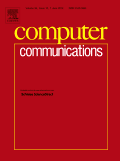
COMPUTER COMMUNICATIONS
Pioneering Research in Communication ProtocolsCOMPUTER COMMUNICATIONS is a premier journal published by Elsevier, covering cutting-edge research in the field of computer networks and communications. With an impressive 2023 Scopus ranking placing it in the 95th percentile and classified as Q1 in its category, this journal embodies the forefront of technological advancement and scholarly excellence. Since its inception in 1978 and poised to continue until 2024, COMPUTER COMMUNICATIONS serves as an essential platform for disseminating high-impact research that advances our understanding of computer networking protocols, architectures, and applications. Although it is not an open-access publication, the journal provides various access options to ensure that its findings are widely circulated among researchers, professionals, and students. Through rigorous peer review and a commitment to fostering innovation, COMPUTER COMMUNICATIONS plays a vital role in shaping the future of communication technologies.
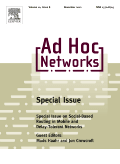
Ad Hoc Networks
Advancing Research in Dynamic Networking SolutionsAd Hoc Networks, published by Elsevier, is a leading journal in the fields of Computer Networks and Communications, Hardware and Architecture, and Software, with an impressive Q1 ranking in all three categories as of 2023. With an ISSN of 1570-8705 and an E-ISSN of 1570-8713, this journal offers a robust platform for disseminating cutting-edge research and advancements in network technologies, emphasizing the importance of efficient communication protocols and architectures in contemporary computing environments. Operating from the Netherlands, it has emerged as a pivotal resource for researchers and professionals seeking to explore novel methodologies, frameworks, and applications within the domain of ad hoc and wireless networks. The journal's high impact factor and Scopus rankings—44th in Computer Networks and Communications, 20th in Hardware and Architecture, and 53rd in Software—underscore its relevance and authority in the academic community. Ad Hoc Networks is committed to fostering a deeper understanding of the complexities and innovations in network design, making it an essential read for anyone invested in the future of communication technology.

IEEE Internet of Things Journal
Connecting Knowledge with InnovationWelcome to the IEEE Internet of Things Journal, a leading publication in the field of connected systems and smart technologies. Published by the IEEE - Institute of Electrical and Electronics Engineers Inc, this journal is dedicated to disseminating cutting-edge research and innovative developments in the Internet of Things (IoT) domain. With an impressive impact factor and recognized as a Q1 journal across multiple categories such as Computer Networks and Communications, Information Systems, and Signal Processing, the IEEE Internet of Things Journal serves as an essential resource for researchers, industry professionals, and students looking to advance their knowledge and contribute to this rapidly evolving field. Since its inception in 2014, the journal has steadily risen to prominence, ranking impressively in Scopus metrics with top positions in key categories, ensuring high visibility and credibility in the academic community. We invite you to explore the rich array of articles and access options available to support your research endeavors in one of the most transformative areas of technology today.
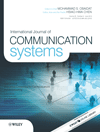
INTERNATIONAL JOURNAL OF COMMUNICATION SYSTEMS
Pioneering Research in Global Communication SystemsInternational Journal of Communication Systems, published by Wiley, is a premier scholarly publication dedicated to advancing the field of communication systems and network engineering. With an ISSN of 1074-5351 and E-ISSN 1099-1131, this journal has emerged as a critical resource for researchers and professionals alike, showcasing innovative research from 1994 to 2024. Holding a distinguished Q2 quartile ranking in both Computer Networks and Communications and Electrical and Electronic Engineering, it ranks within the top tiers of its field, reflecting its high impact and relevance. The journal's focus spans a wide range of topics within these disciplines, including but not limited to, advanced communication protocols, network design, signal processing, and emerging technologies. Although it does not currently offer open access options, the journal remains committed to disseminating high-quality research to contribute meaningfully to the scientific community. Researchers, professionals, and students will find invaluable insights and ideas to further their work and understanding in this dynamic field.
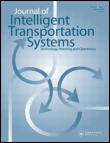
Journal of Intelligent Transportation Systems
Pioneering Research for Smart Mobility SolutionsThe Journal of Intelligent Transportation Systems is a premier peer-reviewed journal published by Taylor & Francis Inc, focusing on cutting-edge research in the fields of transportation systems and intelligent technologies. With an ISSN of 1547-2450 and an E-ISSN of 1547-2442, this journal stands out with its impressive impact, consistently ranking in the Q1 Quartile across multiple categories such as Aerospace Engineering, Applied Mathematics, and Automotive Engineering, among others. As of 2023, it holds distinguished Scopus rankings, including a remarkable #11 position in Aerospace Engineering, showcasing its significance in shaping contemporary research in intelligent transportation. Targeted at researchers, professionals, and students alike, the journal provides a forum for the dissemination of innovative ideas and technologies that enhance transportation systems’ efficiency, safety, and sustainability. The Journal of Intelligent Transportation Systems has been operating since 2004 and continues to play a vital role in advancing knowledge within its respective areas of study within the United Kingdom and globally.
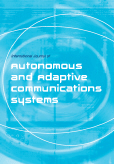
International Journal of Autonomous and Adaptive Communications Systems
Pioneering Research at the Intersection of Technology and CommunicationInternational Journal of Autonomous and Adaptive Communications Systems, published by INDERSCIENCE ENTERPRISES LTD, serves as a vital platform for researchers and professionals engaged in the dynamic fields of autonomous systems and adaptive communication technologies. Since its inception in 2008, this peer-reviewed journal has contributed to the advancement of knowledge within the realms of Computer Science and Electrical and Electronic Engineering, albeit currently positioned in the Q4 quartile, suggesting substantial opportunities for growth and influence within these disciplines. With an emphasis on innovative research tackling challenges in autonomous communication frameworks, the journal invites submissions that explore the convergence of various technologies and their applications. While the journal does not offer open access, it remains a significant resource for academia and industry at large, facilitating collaboration and dialogue among emerging scholars, seasoned experts, and applied practitioners in the UK and beyond. The journey of this journal from 2008 to its ongoing publications through 2024 reflects a commitment to fostering academic discourse in this essential area of study.

Infocommunications Journal
Exploring Trends in Electrical and Electronic EngineeringInfocommunications Journal, published by the SCIENTIFIC ASSOCIATION INFOCOMMUNICATIONS, stands as a vital resource within the fields of Computer Science and Electrical and Electronic Engineering. Since its inception in 2011, this journal has consistently contributed to the discourse surrounding innovations and research trends in these dynamic disciplines, culminating in a converged operational span through 2024. With an ISSN of 2061-2079 and an E-ISSN of 2061-2125, it is indexed in Scopus, showcasing impressive rankings within its categories, notably a Q3 classification in both Computer Science (miscellaneous) and Electrical and Electronic Engineering as of 2023. Although the journal operates under a non-open access model, its contributions are nonetheless essential for researchers and professionals seeking to advance their knowledge and practice. Situated in Budapest, Hungary, at Kossuth Lajos Square 6-8, 1055, the Infocommunications Journal is committed to fostering a rich scholarly exchange, making it an indispensable platform for those invested in the frontiers of technology and communication.